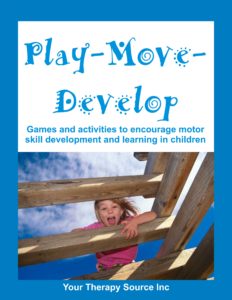Effects of Car Seats on Infant Leg Movement
Nowadays, babies are spending more and more time in car seats. Families are busy running to day care, extra curricular activities for siblings and the stores. When the baby is buckled into the car seat, all too often parents just transition the car seat to the next location and plop the car seat in the grocery cart or on the floor. Hence the term “bucket babies”. Babies are meant to learn through movement. Therefore, babies need floor time for muscle development and cognitive exploration. Although as pediatric therapists, we are constantly encouraging exploratory play for babies there is little research on the effects of being a bucket baby.
Pediatric Physical Therapy published research on the immediate effects of constraining or encouraging positioning devices on leg movement of 13 infants with typical development (TD) and 13 infants at-risk for developmental delay (AR). Each infant was placed in the supine position (laying on the back), a jungle gym, or a car seat with movement sensors on their ankles measuring acceleration and angular velocity. The number of leg movements, peak acceleration, and peak rotational rate of each leg movement was calculated. The results indicated that leg movement quantity and average peak acceleration were significantly lower for the car seat condition compared with the supine position or the gym. The researchers concluded when infants are in car seats there is an immediate effect on infant leg movement characteristics. although the long-term effects remain unknown.
Play Move Develop includes 100 reproducible games and activity ideas to encourage motor skill development and learning in children. Great resource for fun, home exercise program activities. Find out more information.
Reference: Jiang, C. et al. Immediate Effect of Positioning Devices on Infant Leg Movement Characteristics. Pediatric Physical Therapy: Fall 2016 – Volume 28 – Issue 3 – p 304–310. doi: 10.1097/PEP.0000000000000272




